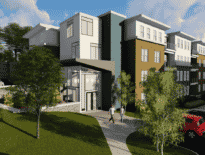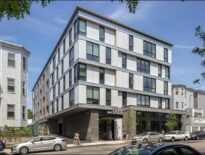Boston is expanding a program that forces drivers for ride-hailing apps to pick up and drop off fares in specific spots instead of double-parking and clogging traffic after initial results showed success.
Uber and Lyft drivers will soon have to confine their stops to three new zones at 50 Northern Ave., 100 Northern Ave. and 56 Seaport Blvd. in the Seaport District. Drivers picking up or dropping off passengers on Boylston Street in the Fenway have had two areas where they and other private vehicles could halt for up to five minutes to load and unload since mid-March of last year.
“A world-class city needs world-class transportation, and we’re working to find creative solutions to congestion, making transportation better for all,” Mayor Marty Walsh said in a statement.
The Fenway program showed fewer traffic jams and delays caused by drivers and pedestrians darting across lanes of traffic to meet up. The pilot also caused an 8 percent decrease in parking tickets issued that may signify fewer vehicles left in the travel lanes, the city said.
“Picking up and dropping off passengers in a travel lane is an unsafe practice,” Acting Boston Transportation Department Commissioner Gregory Rooney said in a statement. “People stepping into traffic to enter or exit a vehicle are at risk of being hit by a motor vehicle or bicycle. This practice presents a safety hazard for all people sharing the road. Passengers and ride-hail drivers are urged to use the designated curbside zones to make our roads safer for all users.”
The Seaport is one of the most congested places in the city at rush hour, in part because of the large supply of free or subsidized parking garages built there in recent years, the frequent use of ride-sharing services – also called TNCs – and the Silver Line’s limited capacity.
“We are grateful for Mayor Walsh’s leadership in implementing these modern mobility improvements in the Seaport,” Yanni Tsipis, WS Development senior vice president, said in a statement. “The new TNC zones not only directly benefit neighborhood residents, cyclists, and our many local small businesses, but also have a regional benefit by reducing roadway congestion for MBTA bus service, freight carrier service to the Conley Terminal and the Ray Flynn Marine Industrial Park, and all motorists throughout the Seaport neighborhood.”







